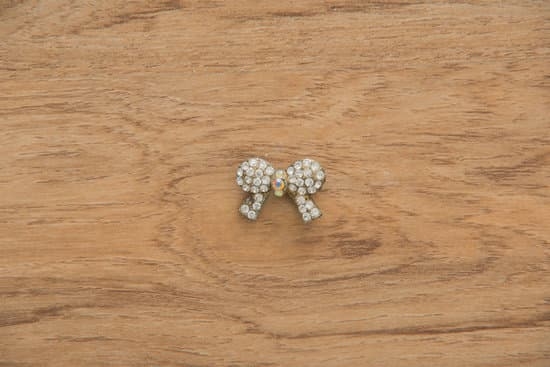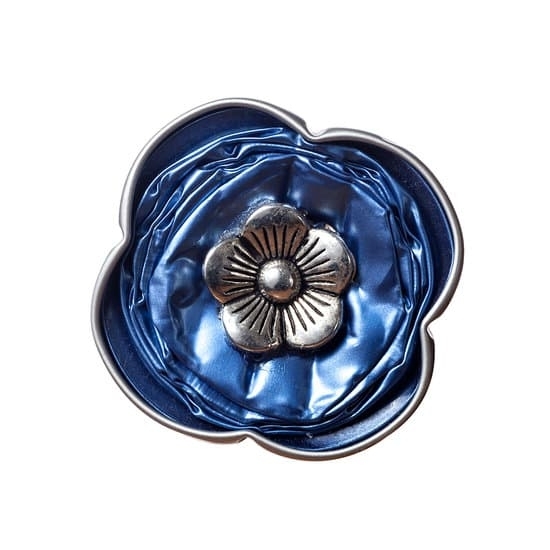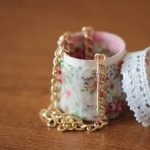Are you a jewelry maker looking to streamline your business and improve efficiency? This article will guide you on how to inventory beads, findings, and supplies for jewelry. Proper inventory management is crucial for any jewelry making business, as it ensures that you have the right materials on hand when you need them, reduces waste, and ultimately saves you time and money.
Organizing and sorting beads, findings, and supplies is key to efficient inventory management. With a well-organized system in place, you can easily access the materials needed for your projects without wasting time searching for them. Categorizing and labeling inventory is essential for easy identification and retrieval of items, whether it’s beads, clasps, wires or tools.
In this article, we will discuss best practices for categorizing and labeling your inventory to optimize your workflow. We will also explore various tools and systems that can help you manage your inventory efficiently. Additionally, we will provide tips on regular inventory checks and updates to ensure that your stock levels are always accurate.
Stay tuned as we delve into dealing with excess inventory, storage solutions, leveraging data for smart purchasing decisions, successful case studies in inventory management in the jewelry making industry. Let’s get started.
The Importance of Organizing and Sorting Beads, Findings, and Supplies
Proper organization and sorting of beads, findings, and supplies are crucial for jewelry makers to streamline their production process and ensure efficient inventory management. By having a well-organized system in place, jewelry makers can easily access the materials they need, maintain accurate stock levels, and reduce the risk of errors or misplaced items. This section will discuss the importance of organizing and sorting beads, findings, and supplies for jewelry making.
Streamlining Production Process
One of the key benefits of organizing and sorting beads, findings, and supplies is the ability to streamline the production process. When materials are stored in a well-organized manner, jewelry makers can easily locate specific items needed for a particular project. This saves time that would otherwise be spent searching for materials, allowing for more efficient production.
Reducing Wastage
Proper organization also helps in reducing wastage of materials. When beads, findings, and supplies are organized and labeled appropriately, it becomes easier to track inventory levels and avoid over-ordering or duplicate purchases. This can result in cost savings for the business as it minimizes the chances of excess inventory or items expiring before they are used.
Ensuring Quality Control
Organizing and sorting beads, findings, and supplies also plays a role in ensuring quality control. By keeping materials properly organized and stored according to their specific requirements (such as temperature or humidity), jewelry makers can maintain the quality of their inventory. This is particularly important for delicate materials such as gemstones or pearls, which require special care to prevent damage or degradation.
Best Practices for Categorizing and Labeling Inventory
Proper categorizing and labeling of inventory is essential for jewelry makers to efficiently manage their beads, findings, and supplies. By implementing best practices in inventory organization, jewelry makers can streamline their workflow, reduce wastage, and make informed purchasing decisions.
One of the best practices for categorizing inventory is to group similar items together. For example, all types of beads should be organized by size, color, material, and style. Findings such as clasps, jump rings, and ear wires should also be categorized based on their specific attributes. This not only makes it easier to locate specific items when needed but also helps in identifying inventory levels at a glance.
Labeling each category and individual item within the inventory is equally important. Clear and detailed labels should include information such as item name, quantity, purchase date, vendor details (if applicable), and any other relevant details. Utilizing barcode or QR code systems can further streamline the labeling process and make it easier to track inventory using software or mobile apps.
Regularly updating the categorization and labeling of inventory is crucial for maintaining accuracy. As new items are added or existing items are used up, it’s important to update the inventory records accordingly. This helps in preventing overstocking or running out of essential supplies when working on jewelry projects.
By following these best practices for categorizing and labeling inventory, jewelry makers can effectively track their beads findings and supplies for jewelry making. It allows them to stay organized, save time on searching for specific items, and ultimately improve their overall efficiency in creating beautiful pieces of jewelry.
Tools and Systems for Efficient Inventory Management
When it comes to jewelry making, having an efficient inventory management system in place is crucial for the success of your business. Properly organizing and tracking your beads, findings, and supplies is key to ensuring that you have the materials you need on hand when creating jewelry pieces. In this section, we will discuss some useful tools and systems that can help streamline the inventory management process and keep your bead supplies organized.
There are several tools and systems available that can make inventory management easier for jewelry makers. Here are some options to consider:
- Inventory Management Software: Invest in a quality inventory management software specifically designed for small businesses or crafters. These programs can help you track your bead inventory, set re-order alerts, and even integrate with online marketplaces if you sell your jewelry creations.
- Barcode Scanners: Using barcode technology can greatly improve the accuracy of your inventory counts. Barcode scanners allow you to quickly scan items in and out of your inventory, reducing the risk of human error.
- Storage Containers: Investing in high-quality storage containers with proper labeling can make a world of difference when it comes to organizing beads, findings, and supplies. Consider using clear containers so you can easily see what’s inside without having to open each one.
Implementing these tools and systems into your jewelry making business can greatly improve efficiency and accuracy when it comes to managing your bead inventory. By utilizing these resources, you can spend less time searching for supplies and more time creating beautiful jewelry pieces for your customers.
Tips for Regular Inventory Checks and Updates
Regular inventory checks and updates are essential for maintaining an efficient and organized jewelry making workspace. It ensures that you have a clear understanding of the beads, findings, and supplies you have on hand, allowing you to make informed decisions when it comes to creating new pieces or restocking your inventory.
Here are some tips for conducting regular inventory checks and updates:
- Set a schedule: Establish a regular schedule for inventory checks, whether it’s weekly, bi-weekly, or monthly. This will help prevent the accumulation of disorganized materials and keep track of any low-stock items that need to be replenished.
- Use a checklist: Create a detailed checklist of all the beads, findings, and supplies you have in your inventory. This can include specific quantities, item names, and any additional details that will help you easily identify each item.
- Utilize storage containers: Invest in storage containers such as bead organizers, compartmentalized trays, or small bins to keep your inventory sorted and easy to access. Label these containers clearly to streamline the process of checking and updating your stock.
- Update your database or system: If you use a digital database or system to manage your inventory, make sure to update it regularly with any changes in stock levels. This may involve adding new items, adjusting quantities, or marking items as out of stock.
By consistently implementing these practices into your jewelry making routine, you can maintain control over your inventory and ensure that you always have the necessary supplies on hand to create beautiful pieces. Regular checks and updates also allow you to identify any excess inventory that may need to be addressed through destashing or storage solutions. Ultimately, effective inventory management is key to running a successful jewelry making business.
Remembering how important to check how often you use those supplies so that when planning future projects or purchases you can take it into account realistically before buying too much or too little.
Dealing With Excess Inventory and Storage Solutions
Managing Excess Inventory
When it comes to inventory management for jewelry making, excess inventory can often be a challenge. Beads, findings, and supplies can accumulate over time, leading to unused or outdated items taking up valuable space. It’s important to regularly assess your inventory and identify any excess items that may be tying up your resources.
One approach to managing excess inventory is to consider running special promotions or sales to move out older or slow-moving stock. This not only helps to free up space but also generates revenue that can be reinvested in new, popular items. Additionally, you may want to consider reaching out to other jewelry makers or crafters who may be interested in purchasing your excess inventory at a discounted rate.
Storage Solutions
Efficient storage solutions are crucial for keeping beads, findings, and supplies organized and accessible. Utilizing storage containers with adjustable compartments can help keep small items sorted and prevent them from getting mixed together. Labeling these containers with clear descriptions of the contents will make it easier for you to locate specific items when needed.
For larger items such as tools or larger quantities of beads, investing in sturdy shelving units or storage cabinets can help maximize space and keep everything tidy. Creating designated areas for different types of inventory can aid in maintaining an efficient workflow and reduce the time spent searching for specific materials when working on jewelry projects.
By effectively managing excess inventory and implementing practical storage solutions, jewelry makers can optimize their workspace and streamline their creative process while minimizing wastage of supplies.
Leveraging Inventory Data for Smart Purchasing and Cost Management
Properly managing the inventory of beads, findings, and supplies is essential for jewelry makers to ensure that they have the necessary materials on hand for their creations. However, it’s not just about keeping track of what you have – leveraging inventory data can also help with smart purchasing and cost management.
One important aspect of leveraging inventory data is understanding which beads, findings, and supplies are used most frequently in your jewelry making projects. By analyzing this data, you can make informed decisions about bulk purchasing those items, potentially reducing costs per unit and overall spending on materials. For example, if you notice that a particular type of bead or finding is consistently running low, you can proactively order more to take advantage of bulk discounts from suppliers.
Additionally, keeping detailed records of your inventory levels can help you avoid overstocking on certain items. By knowing exactly how much of a particular supply you have on hand at any given time, you can prevent unnecessary purchases and reduce the risk of tying up cash in excess inventory. This practice can lead to significant cost savings over time.
It’s also important to regularly review your inventory data to identify any trends or patterns in your purchasing behavior. Are there certain times of year when you tend to use more of a specific material?
Understanding these patterns can help you plan your purchases more effectively and avoid last-minute rush orders that may come with expedited shipping costs. By leveraging this insight from your inventory data, you can optimize your purchasing strategy and better manage your costs in the long run.
| Inventory Data Insight | Benefit |
|---|---|
| Most frequently used beads/findings/supplies | Informed decisions about bulk purchasing for cost reduction |
| Detailed records of inventory levels | Avoid overstocking and reduce excess inventory costs |
| Purchasing behavior patterns analysis | Effective planning leading to cost optimization |
Case Studies
Proper inventory management is crucial for the success of any jewelry making business. It ensures that you have the right materials on hand to fulfill orders, prevents overstocking, and allows you to make informed purchasing decisions. In this section, we will explore some case studies of jewelry making businesses that have implemented successful inventory management strategies.
One example of a successful inventory management strategy is the use of digital inventory tracking systems. A jewelry making business in New York found great success in using barcode technology to keep track of their beads, findings, and supplies. This allowed them to easily monitor stock levels, track usage, and quickly identify when it was time to reorder certain items. As a result, they were able to reduce instances of running out of essential materials and minimize excess inventory.
Another case study involves a jewelry making business that implemented a just-in-time inventory system. By partnering closely with their suppliers and having regular communication about their production schedule, they were able to receive materials as they needed them. This helped them save on storage costs and prevented tying up capital in excess inventory.
Furthermore, another successful strategy involved conducting regular physical counts of inventory and comparing the actual count with the recorded amount in their system. This allowed them to identify discrepancies and address any issues with accuracy promptly.
| Inventory Management Strategy | Result |
|---|---|
| Digital Tracking Systems | Reduced instances of running out of essential materials. |
| Just-in-Time Inventory System | Saved on storage costs and prevented excess inventory. |
| Regular Physical Counts | Identified discrepancies and addressed issues promptly. |
Conclusion
Proper inventory management is essential for jewelry makers to ensure the smooth and efficient running of their businesses. By effectively organizing, categorizing, and labeling beads, findings, and supplies, artisans can save time and reduce the stress that often comes with searching for specific items. Additionally, having a well-managed inventory allows jewelry makers to make informed purchasing decisions, ultimately improving cost management.
Regular inventory checks are crucial for maintaining an accurate count of materials on hand and identifying any potential shortages or excesses. Adjusting inventory levels accordingly helps prevent unnecessary spending on duplicate items while optimizing the use of existing supplies. It also allows jewelry makers to stay ahead of demand and fulfill orders in a timely manner without experiencing delays due to insufficient stock.
Moreover, leveraging inventory data can provide valuable insights into trends and preferences, enabling jewelry makers to anticipate customer demands and tailor their creations accordingly. This strategic use of inventory information contributes to greater customer satisfaction and more successful sales.
In conclusion, mastering how to inventory beads findings and supplies for jewelry is a fundamental aspect of running a successful business in this industry. Properly managed inventory not only streamlines operations but also leads to cost savings, improved customer satisfaction, and informed decision-making. By implementing best practices for inventory management outlined in this article, jewelry makers can position themselves for long-term success in a competitive market.
Frequently Asked Questions
How Do You Track Bead Inventory?
I track bead inventory by using a combination of spreadsheets and physical counts. I make sure to update the spreadsheet every time new beads are added or used in a project, and I conduct regular physical checks to ensure accuracy.
How Do You Label Jewelry Inventory?
When labeling jewelry inventory, I use a system that includes the item name, description, SKU number, and price. This helps me easily identify each piece and its details when it comes to managing my inventory and organizing my catalog.
How Do You Keep Jewelry in Your Inventory?
To keep jewelry in my inventory organized, I use storage containers with compartments to separate different types of jewelry such as necklaces, earrings, bracelets, and rings. Additionally, I use protective packaging like bags or boxes to prevent damage and keep items safe while in storage.

Welcome to my jewelry blog! My name is Sarah and I am the owner of this blog.
I love making jewelry and sharing my creations with others.
So whether you’re someone who loves wearing jewelry yourself or simply enjoys learning about it, be sure to check out my blog for insightful posts on everything related to this exciting topic!





